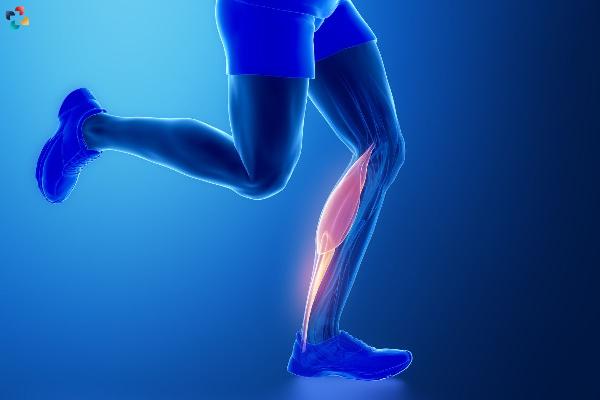Gastrocnemius Tendinopathy Exercises: A Comprehensive Guide

Strong 8k brings an ultra-HD IPTV experience to your living room and your pocket.
Gastrocnemius tendinopathy, often referred to as calf strain or calf tendinitis, is a common condition that affects the large muscle located at the back of the lower leg. This muscle, known as the gastrocnemius, plays a crucial role in activities such as walking, running, and jumping. When the tendon connecting this muscle to the heel becomes inflamed or injured, it can lead to pain and reduced mobility. Fortunately, specific exercises can help alleviate the symptoms and promote healing. This article will delve into the most effective gastrocnemius tendinopathy exercises, their benefits, and how to incorporate them into your rehabilitation routine.
Understanding Gastrocnemius Tendinopathy
What is Gastrocnemius Tendinopathy?
Gastrocnemius tendinopathy is a condition characterized by inflammation, degeneration, or micro-tears in the gastrocnemius tendon. This tendon connects the gastrocnemius muscle to the Achilles tendon and the heel bone. The condition can result from overuse, sudden increases in activity, or direct trauma. Symptoms include pain, swelling, and stiffness in the calf area, especially during activities that involve calf muscle contraction.
Causes and Risk Factors
Several factors can contribute to the development of gastrocnemius tendinopathy, including:
Overuse: Repetitive activities such as running, jumping, or cycling can strain the gastrocnemius tendon.
Sudden Increases in Activity: Rapidly increasing the intensity or duration of physical activities can overload the tendon.
Poor Footwear: Inadequate or unsupportive footwear can increase the risk of tendinopathy.
Muscle Imbalances: Weakness or tightness in surrounding muscles can put extra stress on the gastrocnemius tendon.
Age: Tendons become less flexible and more prone to injury as we age.
The Importance of Exercise in Treating Gastrocnemius Tendinopathy
Exercise is a cornerstone of gastrocnemius tendinopathy treatment. Specific exercises can help strengthen the calf muscles, improve flexibility, and promote healing. By engaging in a structured exercise program, individuals can reduce pain, enhance mobility, and prevent future injuries.
Benefits of Gastrocnemius Tendinopathy Exercises
Pain Relief: Targeted exercises can help alleviate pain by reducing inflammation and promoting blood flow to the affected area.
Improved Flexibility: Stretching exercises can enhance the flexibility of the calf muscles and tendons, reducing the risk of further injury.
Increased Strength: Strengthening exercises can fortify the calf muscles, providing better support for the tendon.
Enhanced Functionality: A well-rounded exercise program can improve overall leg function, making daily activities easier and more comfortable.
Top Gastrocnemius Tendinopathy Exercises
The following exercises are designed to address the specific needs of individuals with gastrocnemius tendinopathy. Incorporate these exercises into your routine gradually, and always consult with a healthcare professional before starting any new exercise program.
1. Calf Stretch
10 Effective Gastrocnemius Tendinopathy Exercises | The Lifesciences Magazine
Purpose: To improve flexibility and reduce tension in the gastrocnemius muscle.
How to Perform:
Stand facing a wall with your hands placed on the wall at shoulder height.
Step one foot back, keeping the heel on the ground and the leg straight.
Bend the front knee and lean forward until you feel a stretch in the back calf.
Hold the stretch for 20-30 seconds and repeat 3 times on each leg.
2. Eccentric Calf Raises
Purpose: To strengthen the gastrocnemius muscle and promote tendon healing.
How to Perform:
Stand on the edge of a step with your heels hanging off the edge.
Slowly raise your heels to stand on your tiptoes.
Gradually lower your heels below the step level, feeling a stretch in the calves.
Perform 3 sets of 10-15 repetitions.
3. Seated Calf Raises
Purpose: To strengthen the gastrocnemius muscle without putting excessive strain on the tendon.
How to Perform:
Sit on a chair with your feet flat on the ground.
Place a weight (such as a dumbbell) on your knees.
Raise your heels off the ground, lifting the weight.
Slowly lower your heels back to the starting position.
Perform 3 sets of 15-20 repetitions.
4. Toe Taps
Purpose: To improve calf muscle endurance and promote circulation.
How to Perform:
Sit on a chair with your feet flat on the ground.
Lift your toes off the ground while keeping your heels in contact with the floor.
Tap your toes back down to the ground.
Perform this motion rapidly for 30-60 seconds.
Repeat 3 times.
5. Foam Rolling
Purpose: To release muscle tension and improve flexibility in the calf muscles.
How to Perform:
Sit on the ground with your legs extended.
Place a foam roller under your calf muscles.
Roll back and forth over the foam roller, focusing on any tight or sore areas.
Spend 1-2 minutes on each calf.
6. Ankle Circles
10 Effective Gastrocnemius Tendinopathy Exercises | The Lifesciences Magazine
Purpose: To enhance ankle mobility and reduce stiffness in the gastrocnemius tendon.
How to Perform:
Sit on a chair with your feet flat on the ground.
Lift one foot off the ground and draw circles in the air with your toes.
Perform 10 circles in each direction (clockwise and counterclockwise).
Repeat with the other foot.
7. Towel Stretch
Purpose: To stretch the gastrocnemius muscle and improve flexibility.
How to Perform:
Sit on the ground with your legs extended.
Loop a towel around the ball of one foot.
Gently pull the towel towards you, keeping your leg straight.
Hold the stretch for 20-30 seconds and repeat 3 times on each leg.
8. Single-leg calf Raises
Purpose: To strengthen the gastrocnemius muscle and improve balance.
How to Perform:
Stand on one leg near a wall for balance support.
Slowly raise your heel to stand on your tiptoes.
Gradually lower your heel back to the ground.
Perform 3 sets of 10-15 repetitions on each leg.
9. Step-Ups
Purpose: To strengthen the calf muscles and improve overall leg function.
How to Perform:
Stand in front of a step or low platform.
Step up onto the platform with one foot, then bring the other foot up to join it.
Step back down with the same foot, followed by the other foot.
Perform 3 sets of 10-15 repetitions on each leg.
10. Wall Sits with Calf Raises
Purpose: To strengthen the gastrocnemius muscle and improve endurance.
How to Perform:
Stand with your back against a wall and your feet shoulder-width apart.
Slide down the wall into a sitting position, as if you are sitting in an invisible chair.
While holding the wall sit, raise your heels off the ground.
Hold for 2-3 seconds, then lower your heels back down.
Perform 3 sets of 10-15 repetitions.
Unveiling the Dangers of Deep Leg Vein Thrombosis: A Silent Menace
Deep Leg Vein Thrombosis (DVT) is a condition that often lurks in the shadows, undetected until it strikes with potentially fatal consequences. In this article, we explore its causes, symptoms, risk factors, and crucial preventative measures.
Read More
Incorporating Gastrocnemius Tendinopathy Exercises into Your Routine
To maximize the benefits of these exercises, it is essential to follow a structured routine. Here are some tips for incorporating gastrocnemius tendinopathy exercises into your rehabilitation program:
Start Slowly
Begin with a few exercises and gradually increase the intensity and duration as your strength and flexibility improve. Avoid pushing yourself too hard, as this can exacerbate the condition.
Consistency is Key
Perform the exercises consistently, ideally 3-4 times per week. Regular practice is crucial for seeing improvements and promoting healing.
Listen to Your Body
10 Effective Gastrocnemius Tendinopathy Exercises | The Lifesciences Magazine
Pay attention to your body’s signals. If an exercise causes pain or discomfort, stop immediately and consult a healthcare professional. It’s essential to distinguish between the normal discomfort of exercise and pain that indicates potential injury.
Combine with Other Treatments
Gastrocnemius tendinopathy exercises should be part of a comprehensive treatment plan that may include rest, ice, compression, and elevation (RICE), as well as physical therapy and anti-inflammatory medications if recommended by your healthcare provider.
Progress Gradually
As you gain strength and flexibility, gradually increase the difficulty of the exercises. This can involve adding weights, increasing repetitions, or incorporating more challenging variations.
Conclusion
Gastrocnemius tendinopathy can be a painful and limiting condition, but with the right exercises, it is possible to alleviate symptoms and promote healing. By incorporating these gastrocnemius tendinopathy exercises into your routine, you can strengthen your calf muscles, improve flexibility, and enhance overall leg function. Remember to start slowly, be consistent, and listen to your body to achieve the best results. Always consult with a healthcare professional before starting any new exercise program to ensure it is appropriate for your specific condition.
Note: IndiBlogHub features both user-submitted and editorial content. We do not verify third-party contributions. Read our Disclaimer and Privacy Policyfor details.


